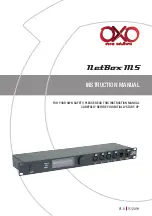
SECTION 8 |
Installation
30
8.1 LOCATION OF INSTALLATION
Please ensure that the following requirements are met:
Working Environment: Indoor use.
Cool: Heat is the worst enemy of electronic equipment. Hence, please ensure that
the unit is installed in a cool area that is also protected against heating effects
of direct exposure to the sun or to the heat generated by other adjacent heat
generating devices.
Well Ventilated: The unit is cooled by convection and by forced air-cooling by
temperature controlled fan. The fan draws cool air from air intake openings on the
front (5, fig 6.1a) and expels hot air through the exhaust openings next to the fan
(18, fig 6.1c). To avoid shut down of the inverter due to over temperature, do not
cover or block these intake / exhaust openings or install the unit in an area with
limited airflow. Keep a minimum clearance of 25 cm around the unit to provide
adequate ventilation. If installed in an enclosure, openings must be provided in the
enclosure, directly opposite to the air intake and exhaust openings of the inverter.
Dry: There should be no risk of condensation, water or any other liquid that can
enter or fall on the unit.
Clean: The area should be free of dust and fumes. Ensure that there are no insects or
rodents. They may enter the unit and block the ventilation openings or short circuit
electrical circuits inside the unit.
Protection Against Fire Hazard: The unit is not ignition protected and should not be
located under any circumstance in an area that contains highly flammable liquids like
gasoline or propane as in an engine compartment with gasoline-fueled engines.
Do not keep any flammable / combustible material (i.e. paper, cloth, plastic, etc.) near
the unit that may be ignited by heat, sparks or flames.
Closeness to the Battery Bank: Locate the unit as close to the battery bank as
possible to prevent excessive voltage drop in the battery cables and consequent
power loss and reduced efficiency. However, the unit should not be installed in the
same compartment as the batteries (flooded or wet cell) or mounted where it will
be exposed to corrosive acid fumes and flammable Oxygen and Hydrogen gases
produced when the batteries are charged. The corrosive fumes will corrode and
damage the unit and if the gases are not ventilated but allowed to collect, they could
ignite and cause an explosion.
Accessibility: Do not block access to the front panel. Also, allow enough room to
access the AC receptacles and DC wiring terminals and connections, as they will need
to be checked and tightened periodically.
















































